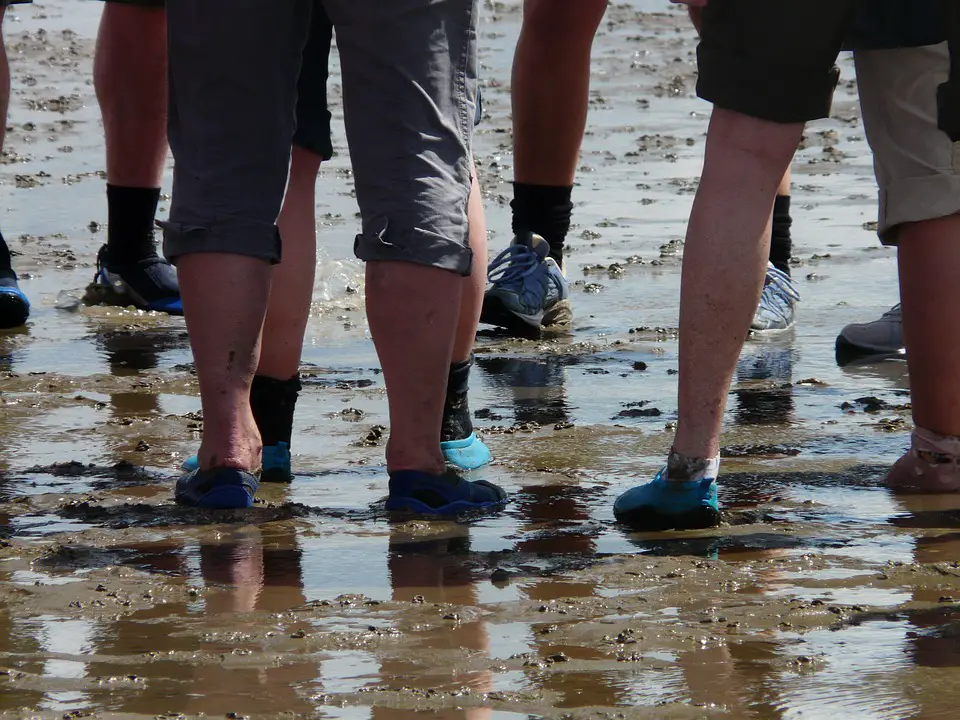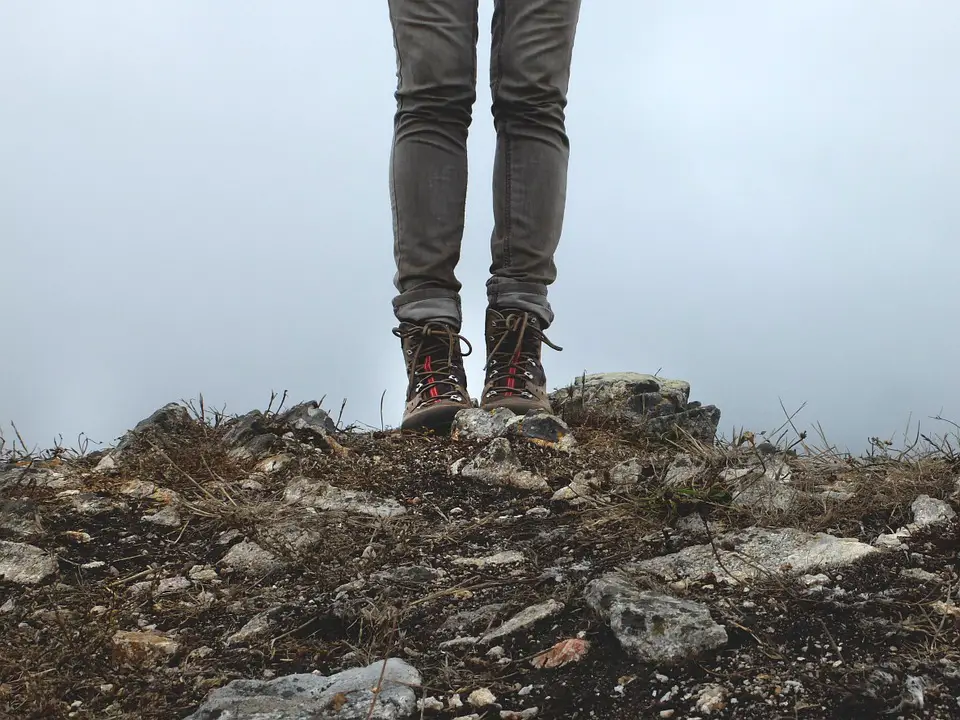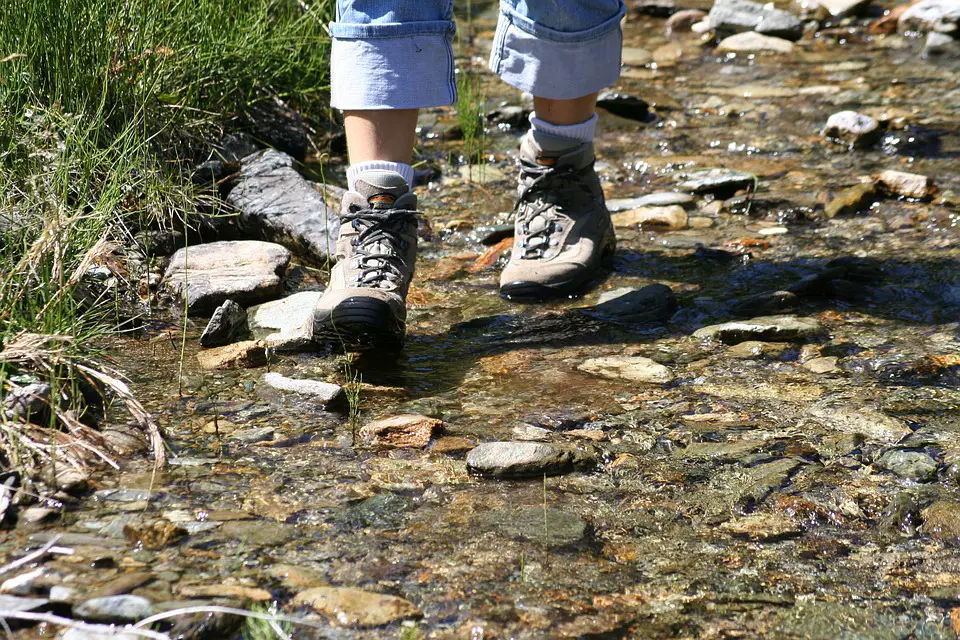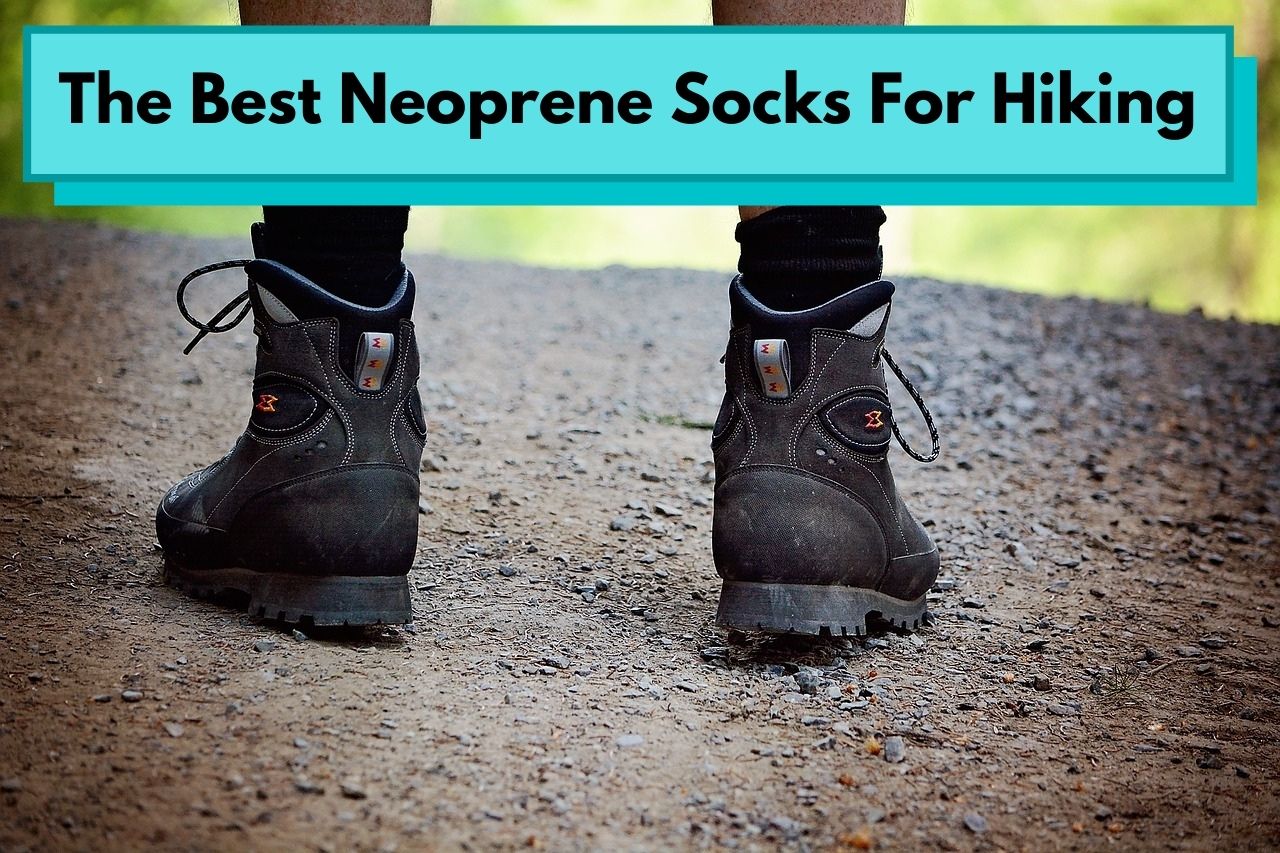One of the most important things you can do during a hiking trip is keeping your feet warm and dry. This can impact the quality, comfort, and length of your hike, which is why choosing the best neoprene socks for hiking is crucial.
Neoprene socks for hiking are a must-have item for wet conditions such as rainy weather, crossing rivers, streams, and creeks, or even hiking around lakes and other bodies of water.

The Benefits Of Neoprene Socks For Hiking
Unless you know every detail of the trail you’re hiking, you’re likely to hit some water or wet ground at some point. When that happens, you’re much better off being prepared for whatever comes ahead.
With neoprene hiking socks on, you’ll be able to traverse water while minimizing the friction on your feet, while also keeping them warm and as dry as possible.
Neoprene socks also offer additional cushioning and vibration dampening, making your hike more enjoyable.
Let’s break down the benefits of neoprene hiking socks further below.
Neoprene Hiking Socks Provide Added Warmth
If you’re hiking in cold weather or snow, neoprene hiking socks are a must due to their insulating capabilities.
Keeping your feet warm and dry will not only make your hike more enjoyable, but you’ll also be able to keep hitting the trail even longer since you’re keeping your feet in better shape along the way.
Neoprene Socks Are Versatile
Neoprene socks aren’t just for hiking – if you’re a big outdoor enthusiast like we are, you’ll also be able to use your socks when backpacking, canyoneering, exploring creeks, and even while swimming!
Some folks even use them as lightweight shoes on simple terrain or when camping, which is a plus.
Neoprene Hiking Socks Provide Water Resistance
As we mentioned earlier, if you’ll be exploring in or around water, you can’t beat closed-cell neoprene socks as a waterproofing option, especially if you go with a sock that goes up past the ankle.
Neoprene socks maintain their insulation abilities even while wet, making them a must-have for any type of wet hiking condition.
Having moisture in your boot can increase the friction on your feet while also softening your skin, making you more prone to blisters.
Using a neoprene sock liner beneath a pair of hiking socks will help prevent this friction and block the moisture, giving you an extra layer of protection and comfort.
Neoprene Socks Are Excellent Foot Protection
Neoprene socks are sold in varying degrees of thickness – the best neoprene socks for hiking are usually the thinner styles available.
Using these as your only pair of socks or under a pair of hiking socks will dampen vibration, reduce impact, and cut down on friction, making your feet protected from blisters and providing extra comfort while you hike.
What Is Neoprene?
Neoprene is a type of synthetic rubber that maintains flexibility over a wide range of temperatures, and is typically used in different water activities like swimming, kayaking, diving, fly fishing, and others. Neoprene is great because it provides insulation against cold temperatures and is also very buoyant, making it a great material for wetsuits.
A few other great benefits of neoprene are that it displays outstanding physical toughness, is resistant to burning, and resists degradation from sun, ozone, and weather. It’s resistant to tears, water, weather, flame, heat, and weather, and also dampens vibration and provides compression when needed.
Neoprene is found in many items we use every day, such as mouse pads, laptop sleeves, hoses, gardening accessories, can koozies, flip flops sandals, and yes – even hiking socks.

The Best Neoprene Socks For Hiking
Now that we’ve covered what neoprene is and what makes neoprene hiking socks so great, let’s get in to our top picks for the best neoprene hiking socks currently available.

NeoSport Wetsuits Premium Neoprene 2mm Hiking Sock
These NeoSport Premium Neoprene 2mm socks are thinner than some standard neoprene sock models, making them better for warmer climates and improved flexibility.
They have a traction sole on the bottom that helps reduce friction, and come in both high top and low top versions depending on your preference and boot style.
They’re also durable and have great insulating properties, making them an excellent choice.

Heimarmene 3mm Neoprene Socks
These Heimarmene Neoprene 3mm socks are extremely durable and breathable as well, making them very versatile for both water/sand and wet/dry applications.
They offer specific section seams around the toe cap, pad, heel, and mid-section, making them durable and able to fit most feet sizes.
They’re also a bit more affordable than other options on this list, making them an excellent choice if this is your first pair of neoprene hiking socks.

Akona 2mm Low Cut Neoprene Socks
These Akona Neoprene 2mm socks feature a low cut design with both glued and blind-stitched seams for additional durability.
Akona also offers a high top version if you’re looking for that style based on your needs.
They’ve very well reviewed, with over 500 customers commenting on how well these neoprene hiking socks performed great for them.

OMGear 3mm Neoprene Socks
These OMGear 3mm Neoprene hiking socks feature a flatlock stitching, offering stretchability and enhanced durability to make sure you get long life out of them.
They also feature an anti-slip sole, resisting tears and abrasions, which is an excellent added value.
One other great benefit is that they come in a variety of designs, colors, and in both low-cut and high-top versions to suit you no matter what your preference.

Things To Consider When Buying Neoprene Hiking Socks
Once you’ve decided to add a pair of neoprene hiking socks to your gear, the next step is choosing the best pair for your needs. Read on below to know what to look for when picking your pair.
The Fit Of Your Neoprene Socks
Neoprene socks generally aren’t the same size as the everyday socks you wear. Expect them to fit tighter inside your boots, but make sure your toes aren’t pinched and that your feet still feel comfortable.
Expect your neoprene hiking socks to have thicker seams and give a feel of greater compression than your regular hiking socks. You may need to adjust the thickness to get the right feel for your preference.
Your Feet Still Might Get Wet When Using Neoprene Hiking Socks
While extremely helpful, neoprene socks aren’t a magic bullet – you can still end up with wet hiking boots, especially if the boots themselves aren’t waterproof.
If you know you’ll be encountering high water levels on your hike, consider wearing taller boots or even bringing along waders on your hike to make sure the water stays off your feet.
Open-Cell Vs Closed-Cell Neoprene Socks
Most of the neoprene hiking socks available on the market are closed-cell, which is a good thing.
Open-cell neoprene doesn’t have an inner lining, can require a lubricant to put the item on, and also lets water in freely, as where closed-cell neoprene is much better at water blocking due to it having an inner lining.
Be sure to stick with closed-cell neoprene socks if you have the option.
Neoprene Sock Drying Time
Neoprene socks do a great job of protecting your feet from water, but they do this partially by soaking up the water on the outer lining. This means they can take a bit of time to get dry. The longer their in your boots, the longer it’ll take them to dry fully.
Luckily, neoprene hiking socks are lightweight and compact, so consider taking an extra pair along with you to change in to on longer hikes where you will encounter wet conditions. (Best to bring an extra pair of hiking socks while you’re at it!).
Weather Conditions
Again, we realize that there’s no crystal ball when hiking, but as in all things, preparedness is key. Take a look at the forecast and the terrain you’ll be hiking – if it’s mostly sunny and dry with no wet terrain, you can bring along your neoprene hiking socks as a backup.
If you’re hiking in cold or wet weather, may be crossing rivers, creeks, streams, or ground conditions are wet or muddy, then slap those neoprene socks on.

Neoprene Socks For Hiking: Frequently Asked Questions
How Long Do Neoprene Hiking Socks Last?
If you take care of your neoprene hiking socks and don’t use them on bare ground, you can expect them to last for many hikes and up to several years. The thicker the external layer, the longer they’ll hold up.
Make sure to follow the manufacturer’s care instructions as closely as possible to extend the life of your neoprene hiking socks.
Be aware that using them as camp socks or on bare ground will reduce the neoprene socks’ lifespan.
Are Neoprene Hiking Socks As Breathable As Regular Socks?
Simply put, waterproof and neoprene socks are not as breathable as regular socks. It’s the trade-off you make for having that waterproofing capability.
If breathability is a concern for you, consider bringing along an extra pair of neoprene hiking socks to change in halfway through your hike or as needed.
Wrapping Up The Best Neoprene Socks For Hiking
Neoprene hiking socks are fantastic for keeping your feet dry and warm in wet conditions, and also add extra vibration and impact dampening while even reducing friction in your boot – all of which are fantastic for adding to the enjoyability of your hike.
If you’re looking for the best neoprene hiking socks, we recommend the NeoSport Wetsuits Premium Neoprene 2mm Hiking Sock. As always, test your neoprene sock for fit and comfort before going out on your next hike.
Have a favorite neoprene sock we didn’t mention here? Let us know in the comments below.
While you’re here, check out our guides to the best hiking gloves and how much toe room is needed in hiking boots to ensure a great fit for your next hike. Thanks again- and happy hiking!

